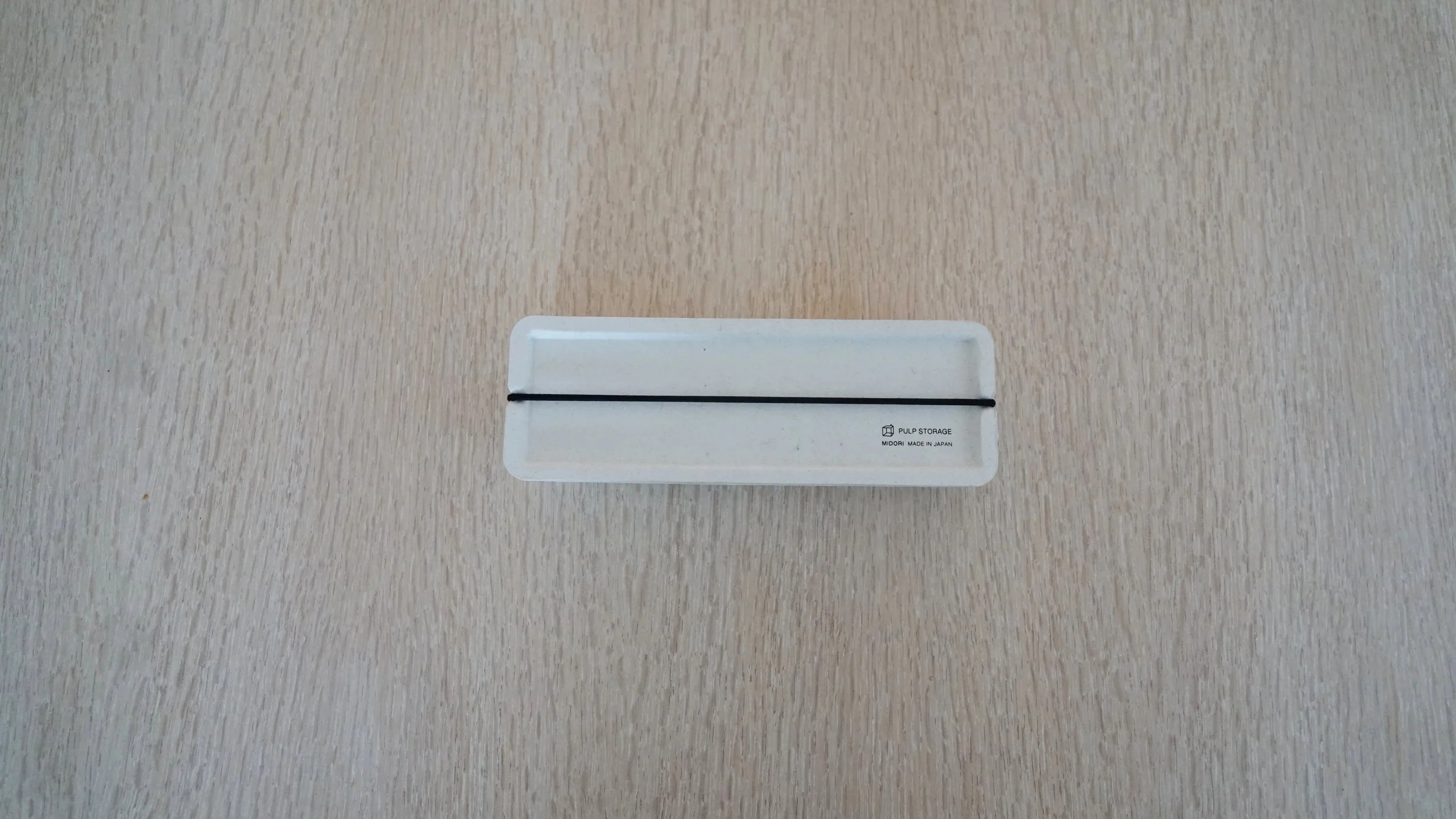Looking at one Product DESIGN | Pulp Storage
PULP STORAGE By Midori
I thought it would be helpful to start a series that looks at all the different aspects that relate to the design of one product. In this post, we'll look at the Pulp storage pencil case by Midori which I picked up recently on holiday in Barcelona. If you would like to see the video version of this post, here it is:
The simple act of looking at a product and asking why it has been designed this way can produce a lot of valuable information. Whether you are a student of design or a seasoned designer, every time we look at and question a product design, there are things to be learned. In this post, we will look closely at functionality, parts, form, materials, appearance and overall quality.
Functionality
Pulp Storage functions as a small storage box or pencil case. It is stackable so if you buy multiples they can be stored on top of each other. It has a removable lid that "locks" in place with an elastic.
Now with functionality, whenever I am designing a product, I always think about where the product is used and where it is stored because a lot of times these places are different. For example, a vacuum cleaner is used around the house and is stored in a closet. In the case of Pulp storage, it could be used and stored in many places: on your desk, on a shelf, in a bag, etc.
So how does the design respond to each of these situations? In situations where you might want easy access to the contents, the elastic can be stored in the channel on the bottom surface leaving the lid easily accessible. For situations where it needs to be locked, like in a bag, the elastic can be brought over the lid to lock it in place.
Parts
The act of listing off all the parts may sound trivial but it’s actually really important. As product designers, we need to acknowledge all the parts in an assembly because each part has a purpose. When you list all the parts, you can start to see how each of these parts plays a role in the overall design.
In the case of the Pulp Storage, the parts are:
- Main container, lid, elastic, 2 pairs of eyelets (it appears like one half of the eyelet has a mushroom head-like feature and the other half is like a ring), and 2 metal crimps to hold elastic in place
Form
Let's start by simply describing the form. Overall, the form is a rectilinear box or cuboid. One thing that becomes obvious is there are 2 main parts: a lid and the main container.
One question is how does this lid stay on?
There are actually 3 features that lock the lid in place.
1. The most obvious is the elastic. It holds the lid on with compression.
2. The second is the indent feature in the lid and main container that ensures the elastic does not slide side-to-side.
3. The third feature is the recess in the lid. This recess reaches down into the main container and locates the lid in space with the main container. There is also a small amount of friction between these 2 parts. Meaning the tolerances between the lid and the main container are tight so this friction fit also helps to keep it in place.
The main container has 5 recesses. My guess is these are for strength. Whenever you add interruptions to a flat surface, whether they be slight curves or obvious indents or ribs, it strengthens the part.
The lid doesn’t have these repeated recesses but it does have the recess that locates it to the main container. You could say this recess serves 2 functions: locating the lid and adding strength.
Can we zoom out of this conversation for a minute? I need to ask a question. Have you noticed that while we are discussing form, we are also talking about materials, manufacturing process and functionality? It’s because form is so intrinsically linked to these other aspects that it is impossible to talk about one without the other.
Material
I looked on Midori's site and this product is made of 100% waste. So once the elastic is removed, the container can be recycled.
The egg carton quality that first attracted me to this product comes from the fact that it's made with similar materials and in a similar process to egg cartons (which I think is moulded pulp from a pulp slurry). It's also similar to a type of structural packaging that is typically used for electronics. It’s the kind of packaging that holds products in place inside their fancy packaging.
If you are curious about learning more about this manufacturing process, check out this video.
Appearance and Overall quality
In terms of colour - The different colours are due to different waste materials. The grey is newspaper. The light grey is a combination of newspaper and milk carton. There is a beige colour from cardboard.
What attracted me to this object, besides it’s interesting use of materials was it’s overall, soft quality. This quality of Soft is consistent in so many ways - from the soft paper surface texture to the light weight in your hand to the not cold temperature (like metal or glass) to the soft muted colours to the fabric covered elastic. It even makes a soft sound when you put the lid on (shot putting lid on) (in comparison to a plastic living hinge or metal clasp): there are practically no hard surfaces.
Another really nice aspect of this product as pencil case is that it’s made of paper, which is what you write on with a pencil or pen.
Pulp Storage is here.





